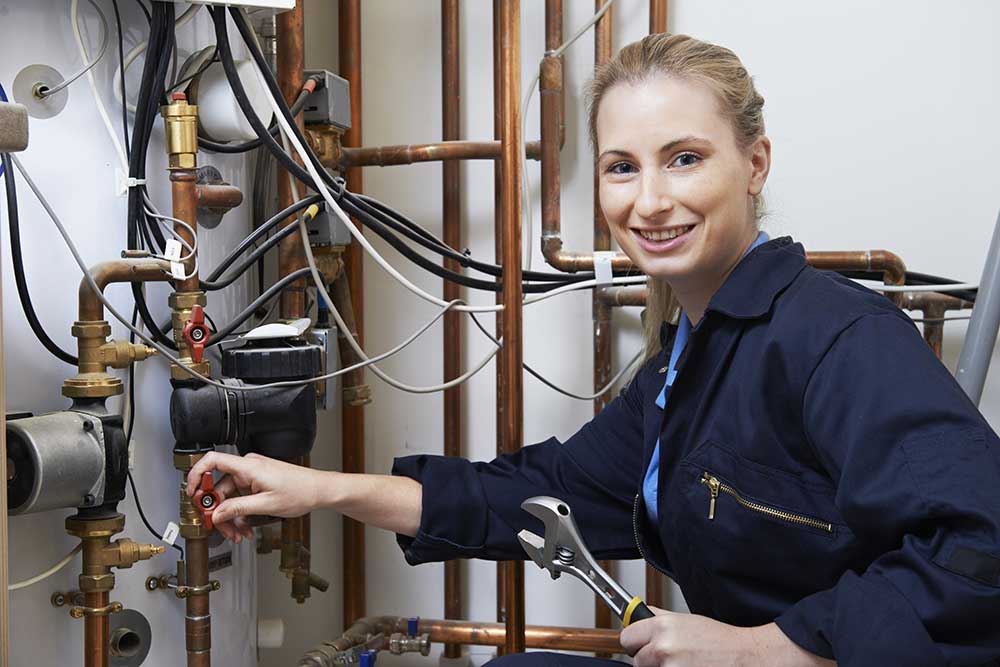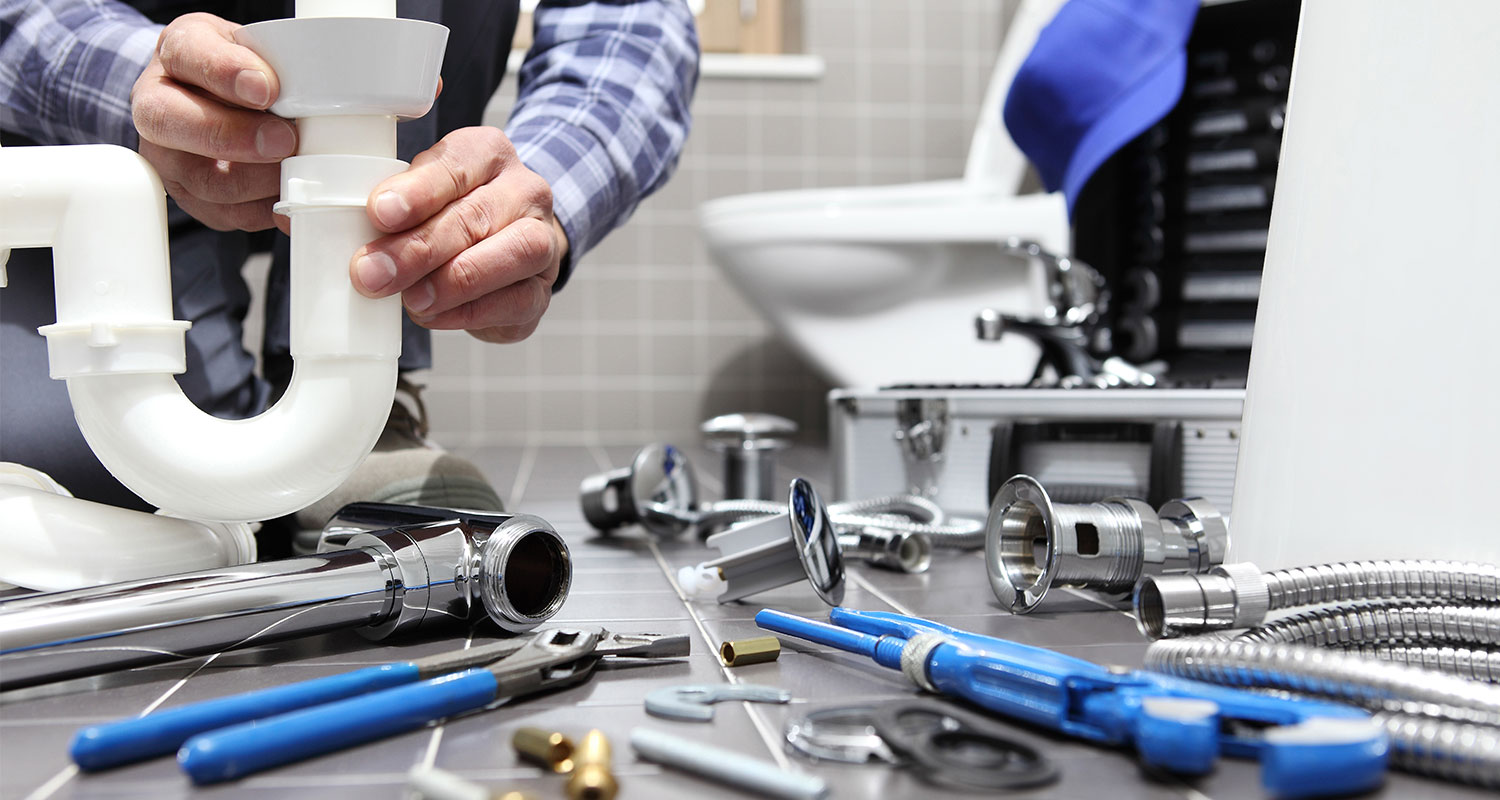The Complete Plumbing Maintenance Guide for First-Time Homeowners
The Complete Plumbing Maintenance Guide for First-Time Homeowners
Blog Article
Common Pipes Troubles Every House Owner Ought To Understand
Homeowners typically encounter a variety of pipes issues that can interrupt every day life. Common issues consist of leaky faucets, clogged up drains, and running bathrooms. These issues usually come from worn-out components or particles buildup. Furthermore, reduced water stress and ruptured pipelines can signal deeper issues. Recognizing these challenges is crucial for efficient upkeep. There are various other less obvious issues that can develop, which call for closer exam.
Dripping Faucets
Leaking faucets can be an irritating hassle for homeowners. These persistent trickles not just develop an aggravating audio but also lead to drainage and enhanced utility bills. A leaky faucet often results from damaged washing machines, O-rings, or seals, which degrade in time as a result of routine usage and direct exposure to water. Sometimes, the faucet's inner parts may be rusted or damaged, necessitating a more comprehensive repair or replacement. Recognizing the source of the leakage is crucial; homeowners may need to disassemble the tap to analyze its parts carefully. Routine maintenance can aid protect against leakages, including cleaning aerators and examining for indicators of wear. Attending to a dripping tap promptly can save water and lower expenses, making it a manageable yet important job for house owners to tackle in preserving their plumbing systems successfully. Appropriate focus to this usual problem can lead to a more comfortable living setting.
Clogged Drains
Several property owners experience the aggravation of clogged up drains at some point. This usual plumbing issue can develop from various reasons, including the buildup of hair, soap residue, food fragments, and oil. These products can develop clogs that impede the circulation of water, resulting in reduce drainage or total stoppage.In kitchens, grease and food scraps are often the perpetrators, while bathrooms regularly suffer from hair and soap buildup. Routine upkeep, such as utilizing drainpipe strainers and preventing putting fats down the sink, can aid prevent clogs.When a blockage does take place, home owners may attempt to make use of a plunger or an industrial drain cleaner as first treatments. Nonetheless, persistent problems might call for professional support to stay clear of damage to pipes - Plumber Mississauga. Recognizing the causes and prevention methods for clogged drains can conserve house owners money and time, ensuring a smoother plumbing experience

Running Bathrooms
Running commodes are a common problem that can originate from various causes, consisting of faulty flappers and chain issues. The continual running not just wastes water yet also leads to boosted energy bills. Dealing with these concerns promptly can bring back and protect against further issues performance to the plumbing system.
Reasons For Running Bathrooms
A relentless flow of water from a bathroom can be both frustrating and wasteful, usually signifying underlying concerns within the pipes system. One usual reason is a used flapper shutoff, which might not develop a correct seal, allowing water to continuously leakage into the bowl. Furthermore, a malfunctioning fill valve can cause extreme water circulation, adding to the issue. Misaligned float systems may likewise cause the toilet to run as they fail to regulate the water level appropriately. An additional possible problem is mineral buildup, which can obstruct elements and impede their capability. Recognizing these reasons immediately can assist house owners attend to the issue before it intensifies, guaranteeing effective operation of their pipes system.
Consequences of Continual Operating
Usually ignored, the consequences of a continually running toilet can substantially affect both water use and home costs. A running toilet can throw away an average of 200 gallons of water daily, leading to raised water expenses and unnecessary source usage. This too much water usage not only strains the house budget but likewise adds to environmental worries, especially in areas facing water scarcities. Additionally, the consistent noise of running water can be a source of inconvenience, disrupting the peace of the home - Plumbers Near Me. Furthermore, extended concerns may bring about more considerable pipes troubles if left unaddressed, resulting in more economic burdens. House owners should identify the value of prompt repair work to alleviate these damaging effects and keep a reliable pipes system
Dealing With Running Commode Issues
Bathrooms that constantly run can be an irritating concern for house owners, however determining the cause is the primary step towards an efficient repair. Common reasons consist of a damaged flapper, which might not develop a proper seal, allowing water to escape into the bowl. Property owners must check the flapper for wear and replace it if necessary. In addition, the fill shutoff could be malfunctioning, triggering excess water to flow continually. Changing this part or readjusting may deal with the issue. Another potential offender is a misaligned float, which can be changed to the appropriate height. Regular maintenance and prompt fixings can protect against running bathrooms, making sure both water conservation and cost financial savings on energy expenses.
Low Water Stress
Low tide pressure can be a frustrating experience for home owners, often showing up as a weak stream from taps and showerheads. This concern can come from various reasons, including debris buildup in pipelines, rusty plumbing, or issues with the local water system. House owners may originally observe low tide stress in specific areas of the home, but it can intensify to an extra prevalent problem otherwise attended to promptly.In some instances, malfunctioning stress regulatory authorities can also be in charge of inadequate water flow. Normal upkeep, such as flushing the water heating unit and checking for obstructions, can aid minimize these concerns. It might be needed to consult an expert plumbing professional to identify and settle the underlying cause if low water stress persists. Determining the resource of low water stress is essential for bring back correct water circulation and ensuring a functional plumbing system.
Burst Pipes
Burst pipelines can be a serious plumbing problem, commonly arising from the same elements that add to low tide pressure, such as temperature level variations and maturing facilities. When water ices up within pipes, it expands, enhancing pressure up until the pipeline can no more contain it, leading to a tear. Furthermore, deterioration from extended exposure to water can deteriorate pipes, making them at risk to breaking under typical pressure.Homeowners may see indicators of a ruptured pipe with sudden water leakages, damp places on ceilings or wall surfaces, and an unexpected increase in their water bill. Immediate activity is important; stopping working to attend to a ruptured pipe can lead to substantial water damage, mold growth, and pricey fixings. Normal examinations and upkeep of plumbing systems can help prevent this concern. Shielding pipes in colder locations and changing old piping can greatly minimize the threat of burst pipes, guarding the home's plumbing stability.
Water Heating Unit Issues
Just how can house owners recognize water heating system concerns prior to they intensify? Routine evaluation and upkeep can aid find prospective issues early. Home owners ought to try to find signs such as inconsistent water temperature, uncommon sounds, internet or a reduction in warm water supply. Leaks or puddles around the unit might indicate a malfunction that requires instant attention. The appearance of corrosion or debris accumulation can also signify the need for maintenance.Additionally, homeowners must keep an eye on the age of their water heating unit; most systems have a lifespan of 8 to 12 years. It might be time to show on substitute if the heating unit is approaching this age and revealing indications of wear. Normal flushing of the container can stop sediment build-up, lengthening the system's life. By continuing to be alert and attending to problems without delay, homeowners can stay clear of costly repairs and ensure their water heating system operates effectively for years to find.
Sewer Line Problems
Several home owners might encounter sewer line troubles at some factor, affecting their pipes system's general capability. Common issues consist of clogs, tree root breaches, and pipeline damage. Blockages frequently result from the buildup of oil, hair, and international items that block the flow of wastewater. Tree origins can infiltrate drain lines, causing cracks and leaks. Additionally, maturing pipelines may wear away or damage, causing further complications (Plumber). Indications of sewage system line difficulty consist of sluggish drains, unpleasant odors, and sewage back-ups, which can position wellness dangers. Property owners need to resolve these issues promptly to prevent extensive damage and pricey repair services. Normal maintenance, such as arranged examinations and cleaning, can assist avoid substantial problems. In serious instances, specialist treatment might be necessary to fix or replace damaged areas of the sewage system line. Knowing these possible issues can help house owners take proactive procedures to preserve their plumbing systems successfully
Often Asked Questions
How Can I Stop Pipes Troubles in My Home?
To avoid plumbing troubles, regular upkeep is important. Property owners should evaluate pipelines for leaks, tidy drains, and display water stress. Additionally, informing themselves concerning proper usage can substantially minimize the danger of future pipes concerns.
When Should I Call a Plumber As Opposed To Repairing It Myself?
When to call a plumbing professional often depends on the extent of the concern, identifying. Significant leaks, consistent obstructions, or unknown issues call for specialist assistance, making certain safety and avoiding more damages as opposed to taking the chance of individual attempts at repair service.
What Are the Signs of Hidden Plumbing Leaks?
Indicators of concealed pipes leakages include unexplained water costs, moist places on ceilings or wall surfaces, mold and mildew development, and a stuffy odor. These signs often recommend underlying issues that call for professional analysis and fixing for resolution.
How Frequently Should I Have My Plumbing Inspected?
Regular why not try here pipes inspections are recommended each to two years. This frequency assists recognize possible issues early, making certain the system remains effective and lowering the danger of costly repair work or unexpected emergencies in the future.
Are There Do It Yourself Solutions for Minor Plumbing Issues?

Report this page